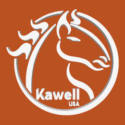At the 2017 Iowa State University (ISU) Spring Clinic and Competition, veterinarian Dane Tatarniuk and resident farrier Doug Russo discussed the street nail procedure (navicular bursotomy procedure) and the role of farriery for the horse post surgery. During this clinic, Tatarniuk discussed a retrospective study on the street nail procedure that was conducted by members of the ISU School of Veterinary Medicine https://vetmed.iastate.edu/.
David Suarez-Fuentes, DVM, was the lead author of the paper, “Outcome of Horses Undergoing Navicular Bursotomy for the Treatment of Contaminated or Septic Navicular Bursitis: 19 Cases (2002-2016).” He presented the paper at the March 2017 Veterinary Orthopedic Society Conference in Snowbird, Utah.
The paper detailing the street nail procedure was published in 1986 (Richardson, G. and O’Brien T. “Puncture Wounds of the Navicular Bursa in 38 Horses: A Retrospective Study.” Vet. Surg, 15, 156-160). The paper discussed the poor prognosis for the affected horses’ return to previous athletic function or even survival.
As the paper title indicates, Suarez-Fuentes’ retrospective study looked at 19 navicular bursotomy cases performed over a 14-year period. The primary objective for this study was to look at the outcome of the horses that underwent a bursotomy at ISU. How many of these horses returned to work at the same performance level as prior to surgery or those that returned at a lower level or failed to return to work? All of the horses in these cases survived.
Of the pool, 14 were Quarter Horses, a common breed among what they see in the clinic, 11 were female and the ages ranged from 1 month to 17 years. The study showed that 16 returned to their previous level of use, while three returned to a lower level of performance or were pasture sound.
Suarez-Fuentes says one of the challenges of a retrospective study like this is owners’ recall bias. Many of these surgeries occurred several years ago, and various factors may inhibit the owners’ recollections on the animal’s recovery and performance.
"For example, if the procedure was conducted in 2004, the owner was contacted for this research in 2016,” he explains. “People may forget, the horse may have been sold, died or some other reason. The time of follow-up can generate different factors that can make it difficult for us to access.”
 At the 2017 ISU Spring Clinic, Dr. Dane Tatarnuik demonstrated a navicular bursotomy on a cadaver foot. After replicating the procedure, students and farriers could examine the foot to get a better understanding of the structures affected.
At the 2017 ISU Spring Clinic, Dr. Dane Tatarnuik demonstrated a navicular bursotomy on a cadaver foot. After replicating the procedure, students and farriers could examine the foot to get a better understanding of the structures affected.
The original paper gave a poor prognosis of survival (below 50%). Suarez-Fuentes believes this pool from ISU had a better success rate by combining the procedure with “local antimicrobial perfusion techniques.” He also credits the farrier work for its part in helping the horses survive and return to work. In these cases, there was a consistent use of a patten-bar shoe and hospital plate by the farrier.
“Incorporating the patten-bar shoe with a hospital plate has an influence in helping these horses survive and return to previous function,” he says, adding that there are papers on elevating the heel, but there is nothing among published scientific articles on making and using the patten-bar shoe. Also his study doesn’t analyze the mechanics or anything particular about the shoe-plate combination that could differentiate it from what others may have used. No other studies have examined the mechanics and effectiveness of the shoe-plate combination in treating this diagnosis.
“There is not a controlled study on the mechanics of the shoe, which would require horses without the puncture wound or sepsis,” he notes.
Navicular bursoscopy is now the “gold standard” for treating these cases. The ISU veterinarians will commonly use this procedure in cases. And if bursoscopy fails, the street nail procedure remains a second option. However, Suarez-Fuentes says that they may only have one shot at addressing the problem in some cases, so a bursotomy may be preferred. One of the limiting factors could be that the owners lack the financial means to pay for both procedures; so opting for the more aggressive option is favored.
The qualification of “returning to previous levels of performance” should be placed in context. Among the 19 cases, seven were used in athletics, including one in Western Pleasure, one as a hunter/jumper, one in driving and the reminder as trail riders. A different pool comprised of horses at different levels of competition before surgery resulted in perceptions of poorer performance due to the type and levels of work.
“A lot of times in cases like these, we are talking about survival and performing is secondary,” says Suarez-Fuentes. “Historically this disease had poor prognosis for survival, so having the horse alive, comfortable and healthy is most important.”







